Medical science exam
1/96
There's no tags or description
Looks like no tags are added yet.
Name | Mastery | Learn | Test | Matching | Spaced |
|---|
No study sessions yet.
97 Terms
Name the cavity the houses the eyes
cranial
name the cavity that houses the urinary organs
pelvic
Cavity that houses gallbladder, liver, and spleen
abdominal
Shoulders are _____ to midline
Lateral
Cavity that houses heart, lungs, and large vessels
thoracic
Posterior
Back side of body
superior
above
Anterior side of body
Front side
proximal
towards attachment
distal
away from attachment
what are two types of antigens on red blood cells that determine blood type
A and B
Heart rate receives deoxygenated blood and it to the lungs
pulmonary circulation
which carries deoxygenated nutrients depleted blood from the fetus to the placenta
umbilical artery
Brings oxygenated blood from the heart to the body
Aorta
Brings deoxygenated blood from the body to heart
Vena Cava
3 layers of heart walls
Epicardium, myocardium, endocardium
another name for white blood cells
leukocytes
hemoglobin found in
red blood cells
which layers heart lines the cavities and valves of the heart
endocardium
Joseph lister
Discovered the first antiseptic
Ignaz Semmelweis
Handwashing to stop spread of child bed fever
Discovered Penicillin
Alexander Fleming
Airborne Precaution
Pathogen transmitted through airborne droplets : MTV
Droplet Precautions
pathogens transmitted by large particle, droplets expelled during cough, sneezing, talking or laughing: PIMP
Airborne PPE
N95 mask, isolated room and surgical mask
Droplet PPE
surgical mask and goggles
prone position
face down
supine position
face up
Transverse
Divides upper and loved
Sagittarius
Divides right and left
Frontal
divided front and back
Dorsal
Towards the back
Ventral
Towards the belly
unilateral
one side of the body
bilateral
both sides of the body
ippilateral
same side of body
contralateral
opposite side of the body
Upper Right Quadrant
Contains: Right kidney, right adrenal gland, colon, small intestine, liver, pancreas, and gallbladder
Left Upper Quadrant
Contains: left kidney, left adrenal gland, small intestine, colon, stomach, liver, pancreas, and spleen
Right lower Quadrant
contains: right ureter, appendix, colon, small intestine, right ovary, small intestine
left lower quadrant
contain: left ureter, colon, small intestine, left ovary
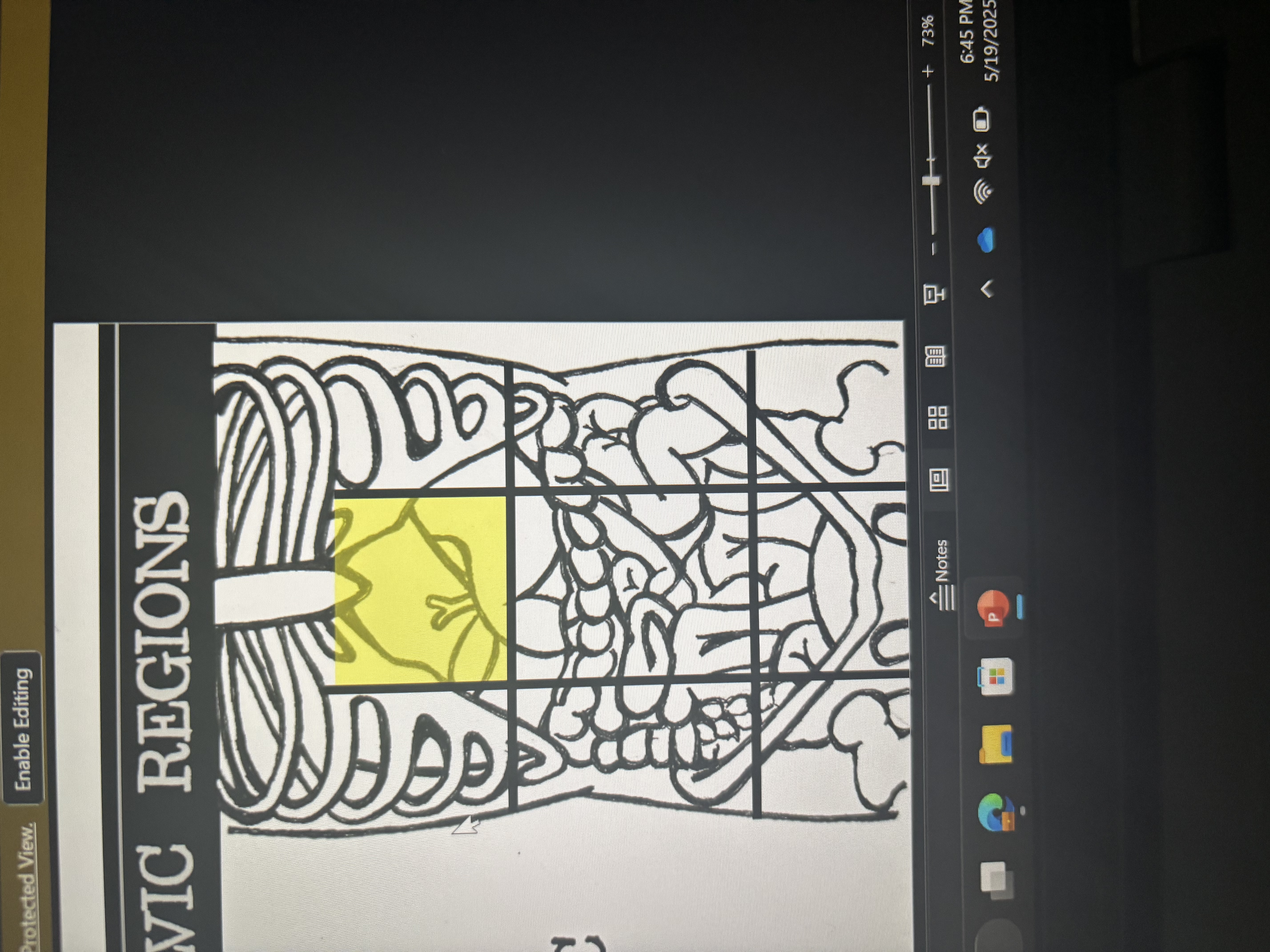
Epigastric Region
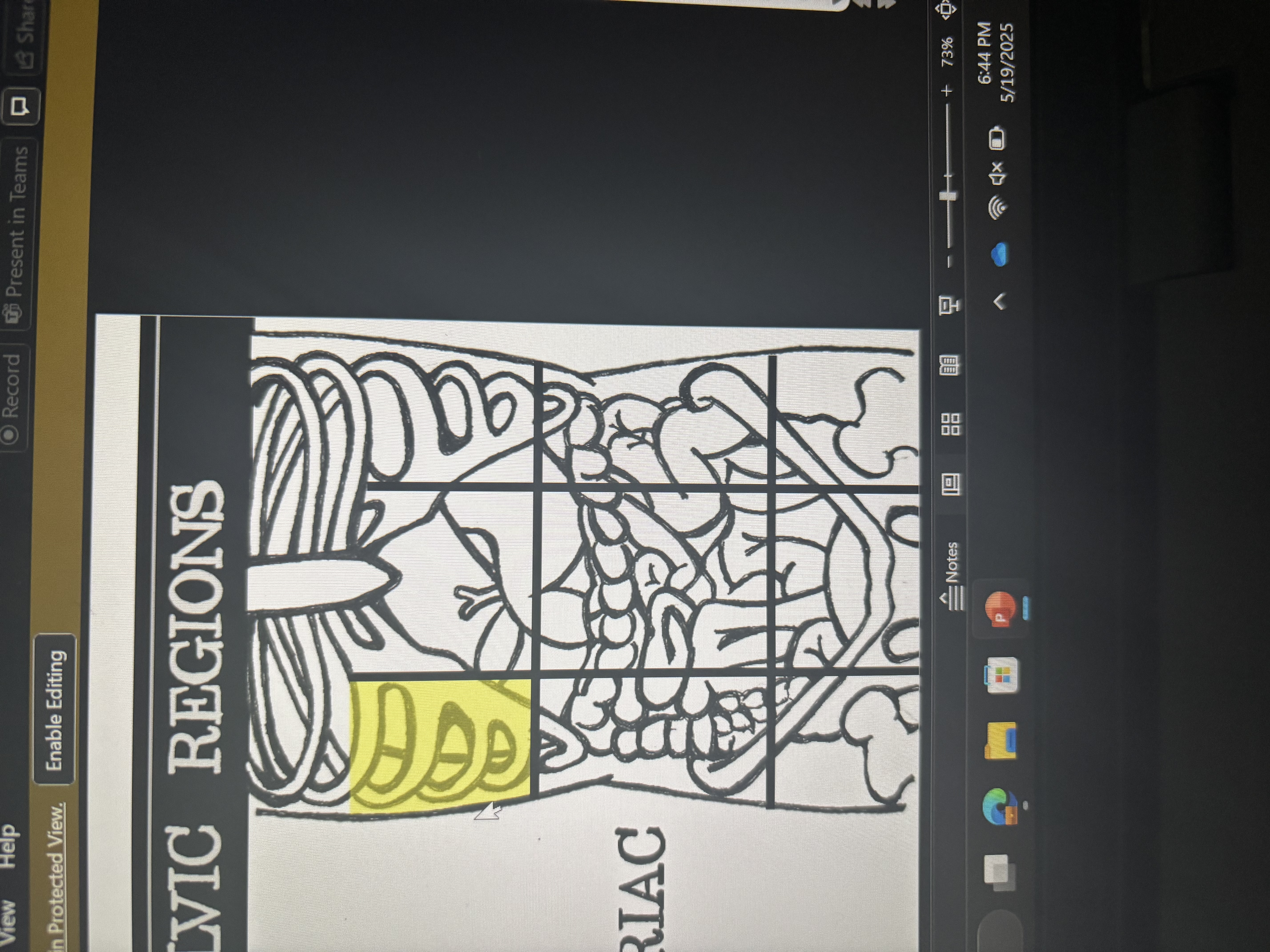
Right Hypochondriac region
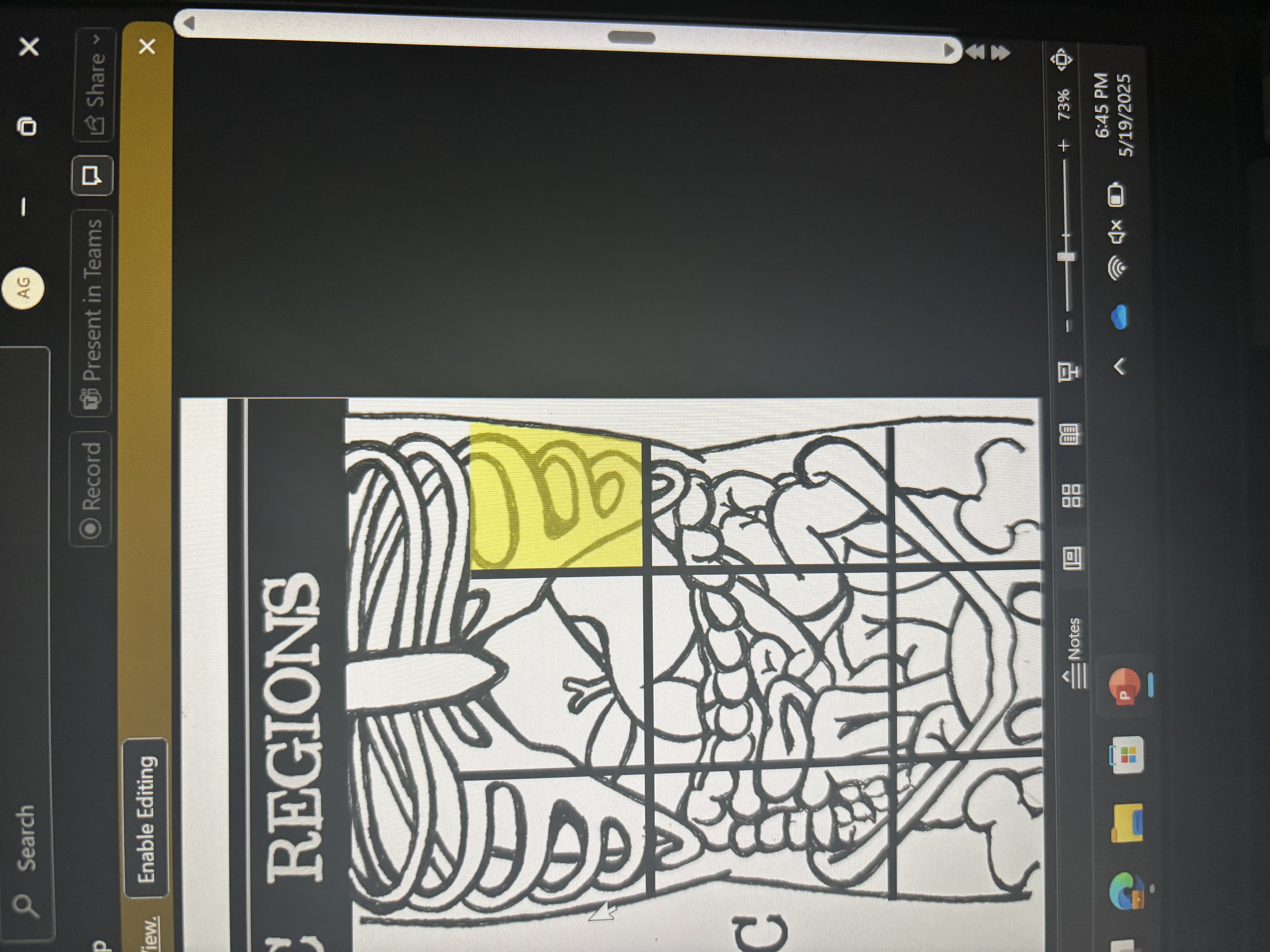
left hypochondriac region
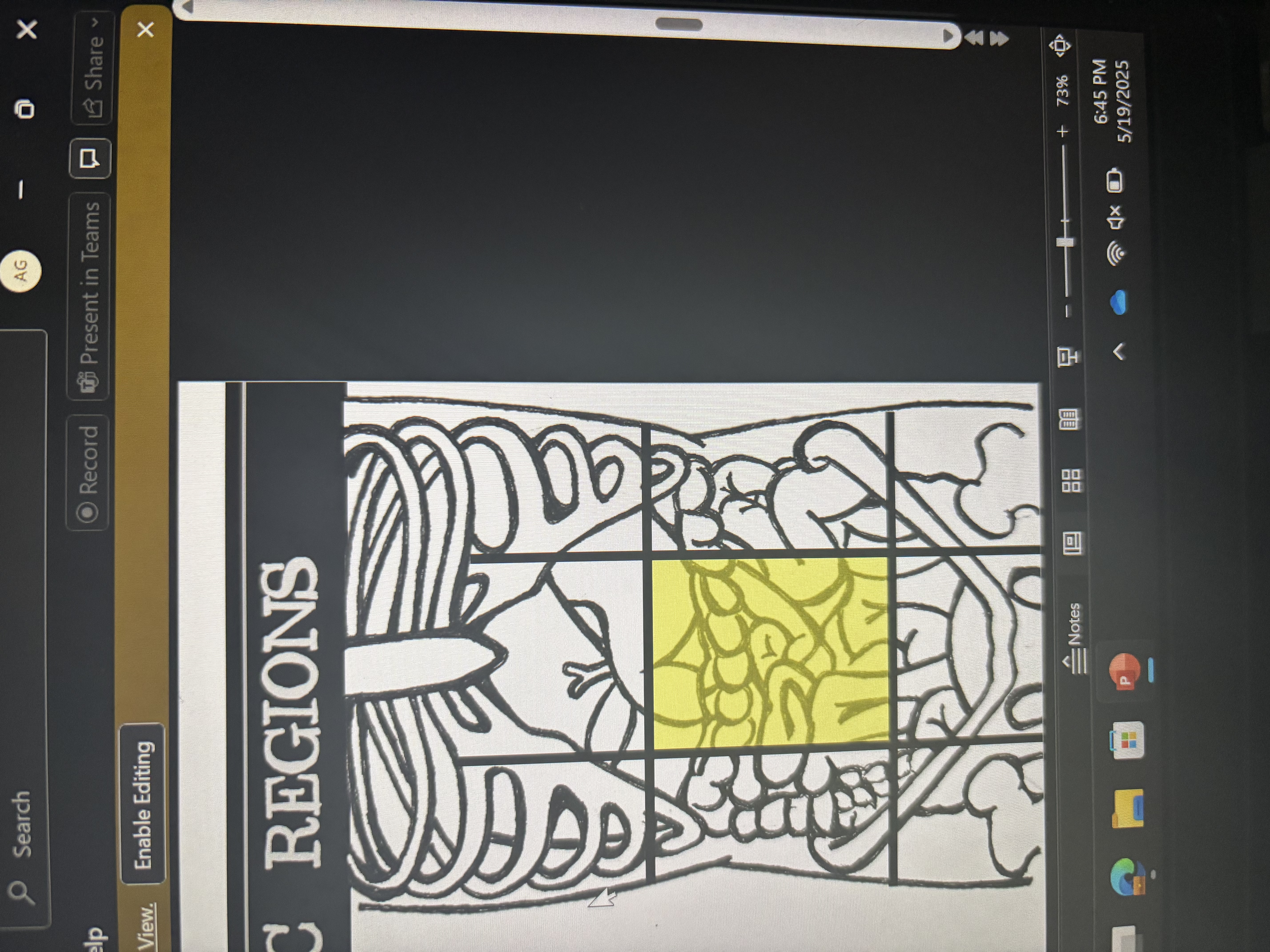
umbilical region
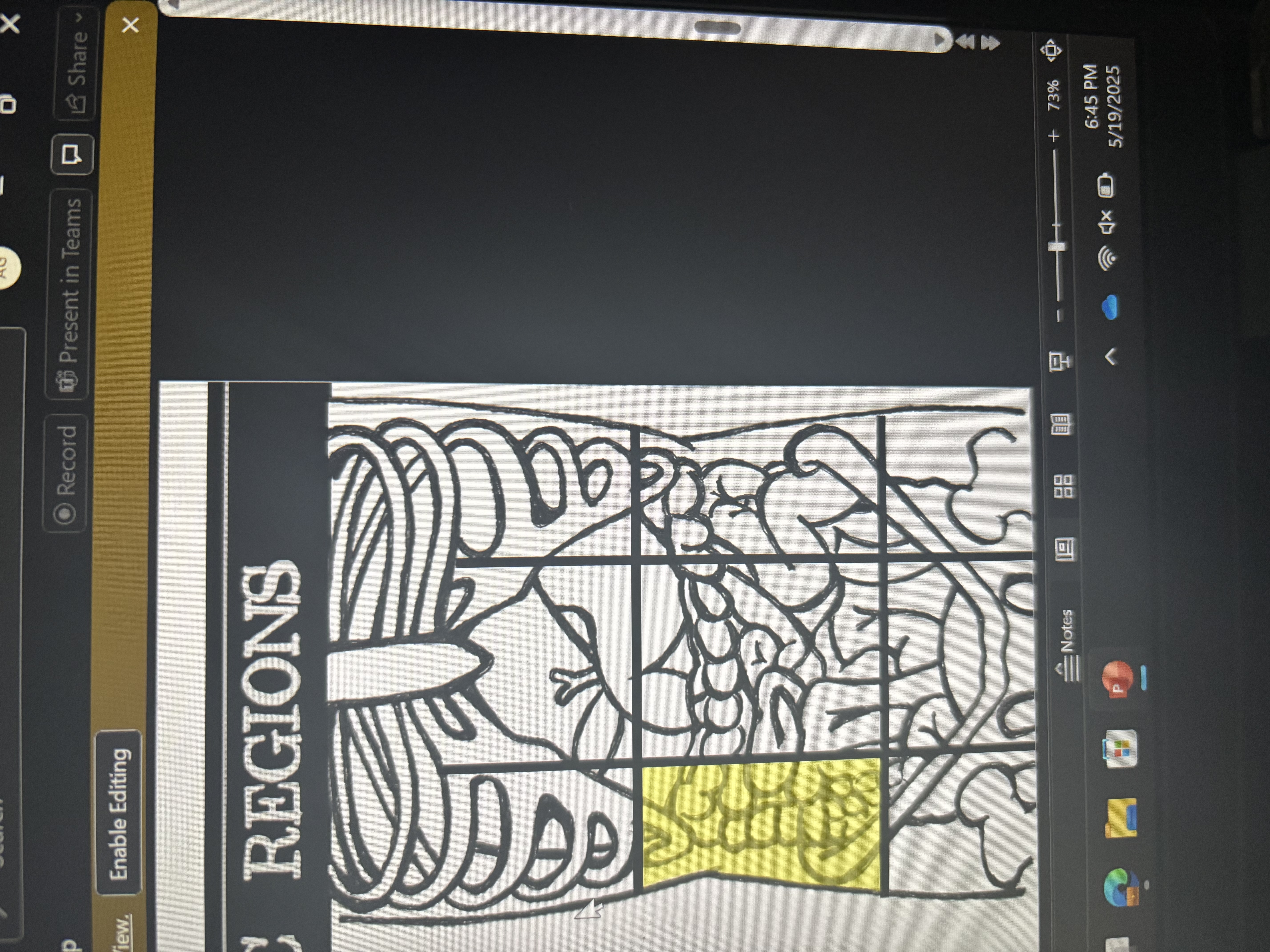
right lumbar region
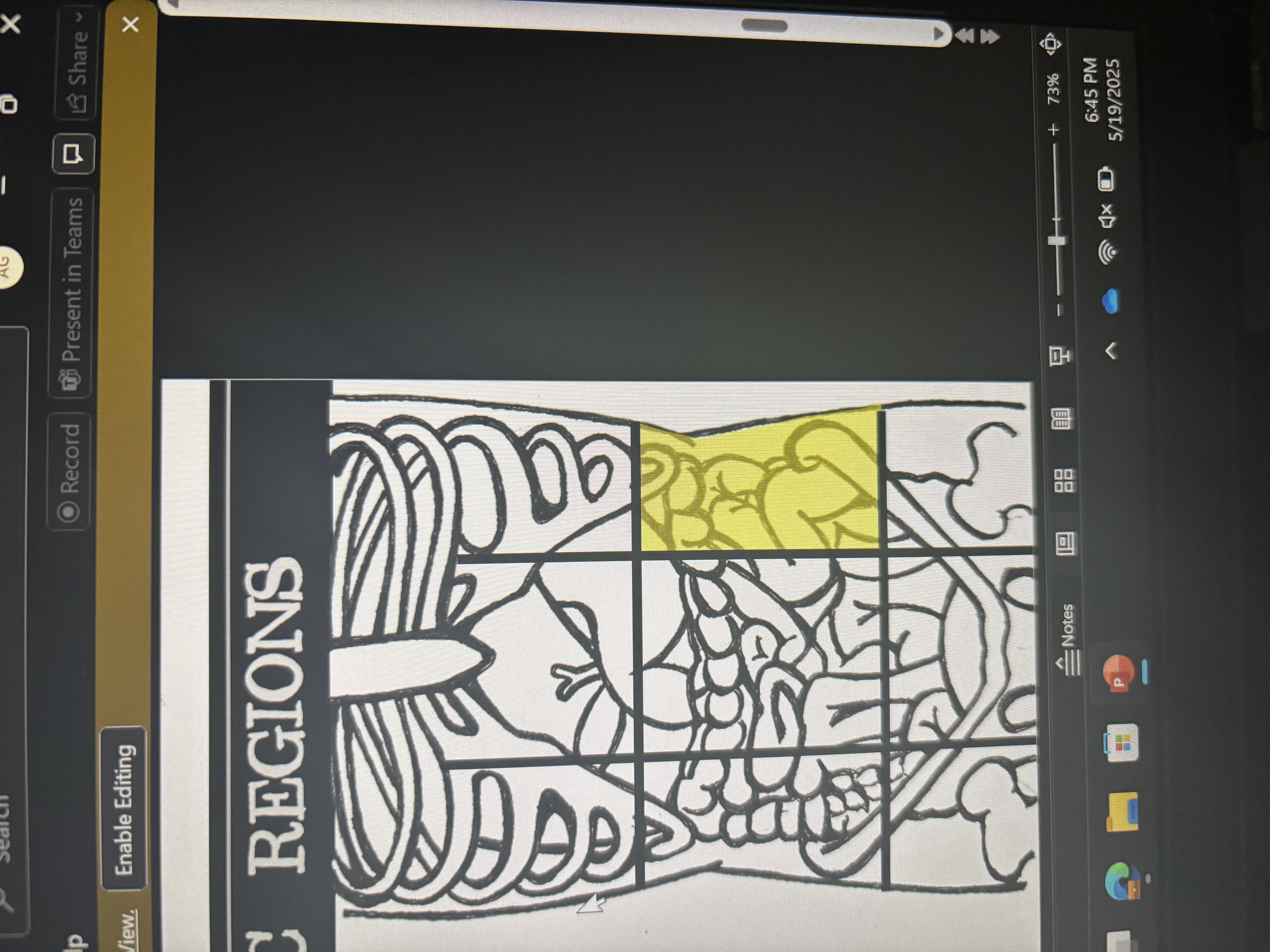
left lumbar region

hypogastric region
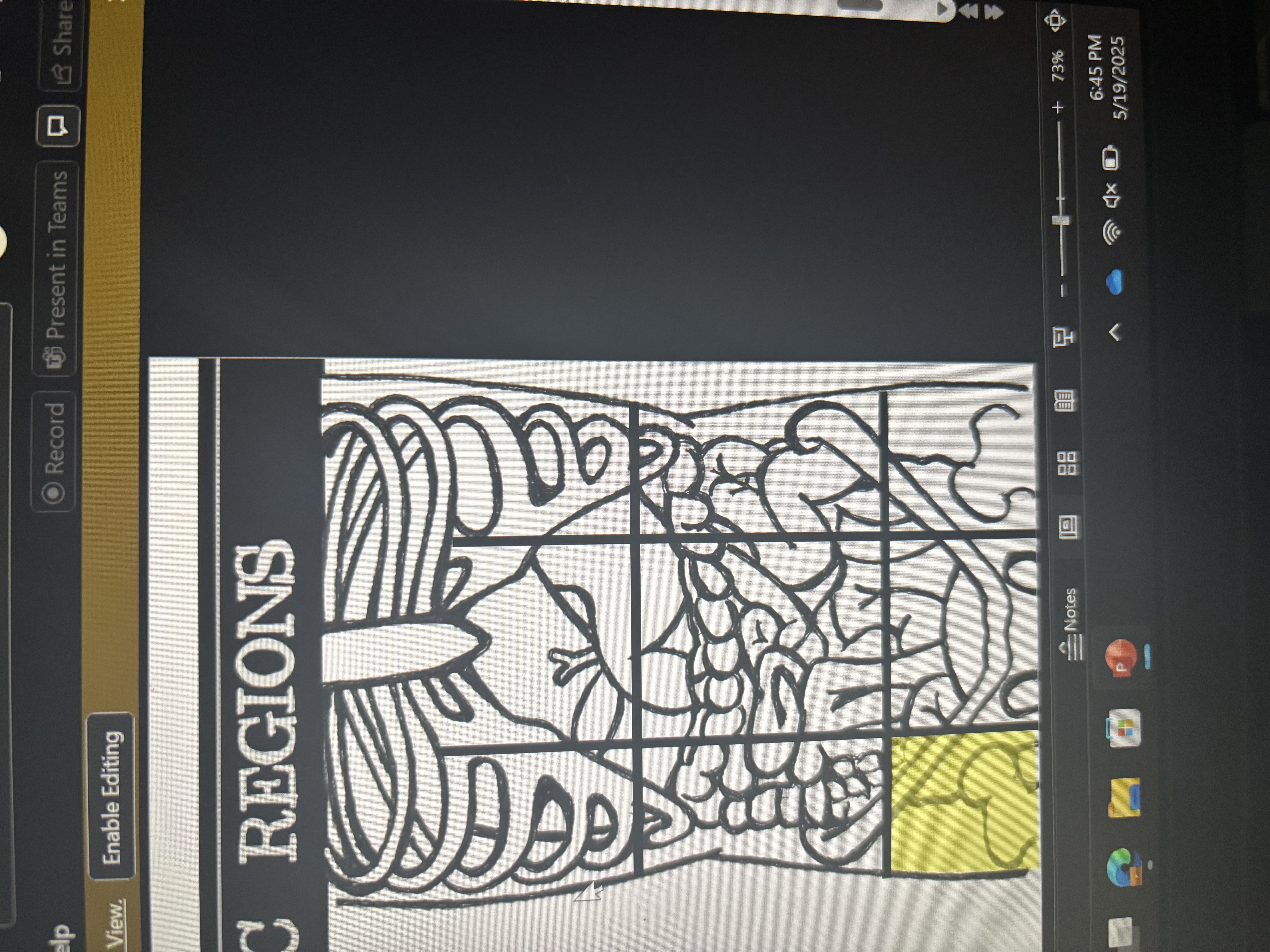
right iliac region
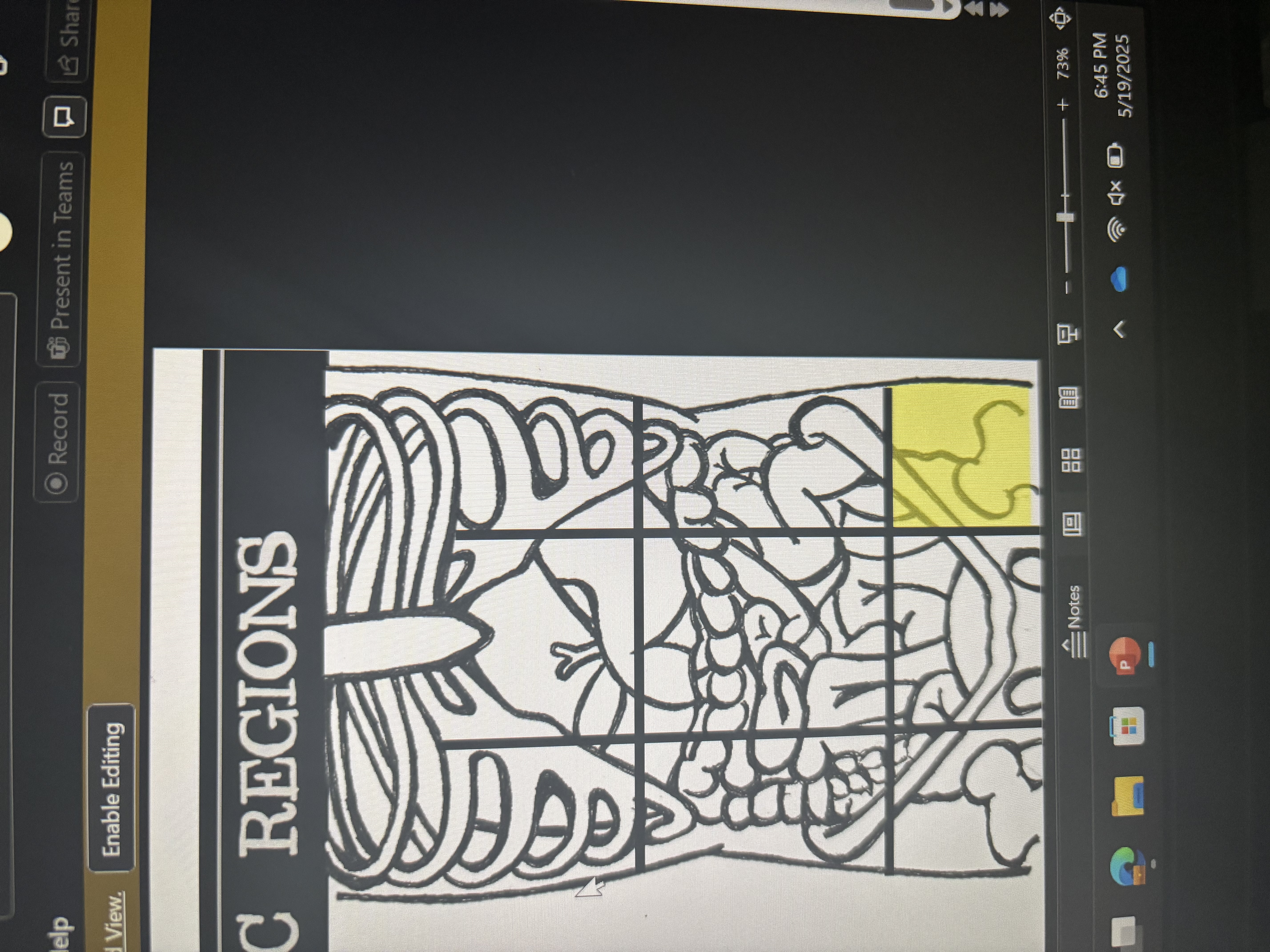
left iliac region
Diaphragm
Muscle that separate the thoracic cavity from the abdominal pelvic cavity
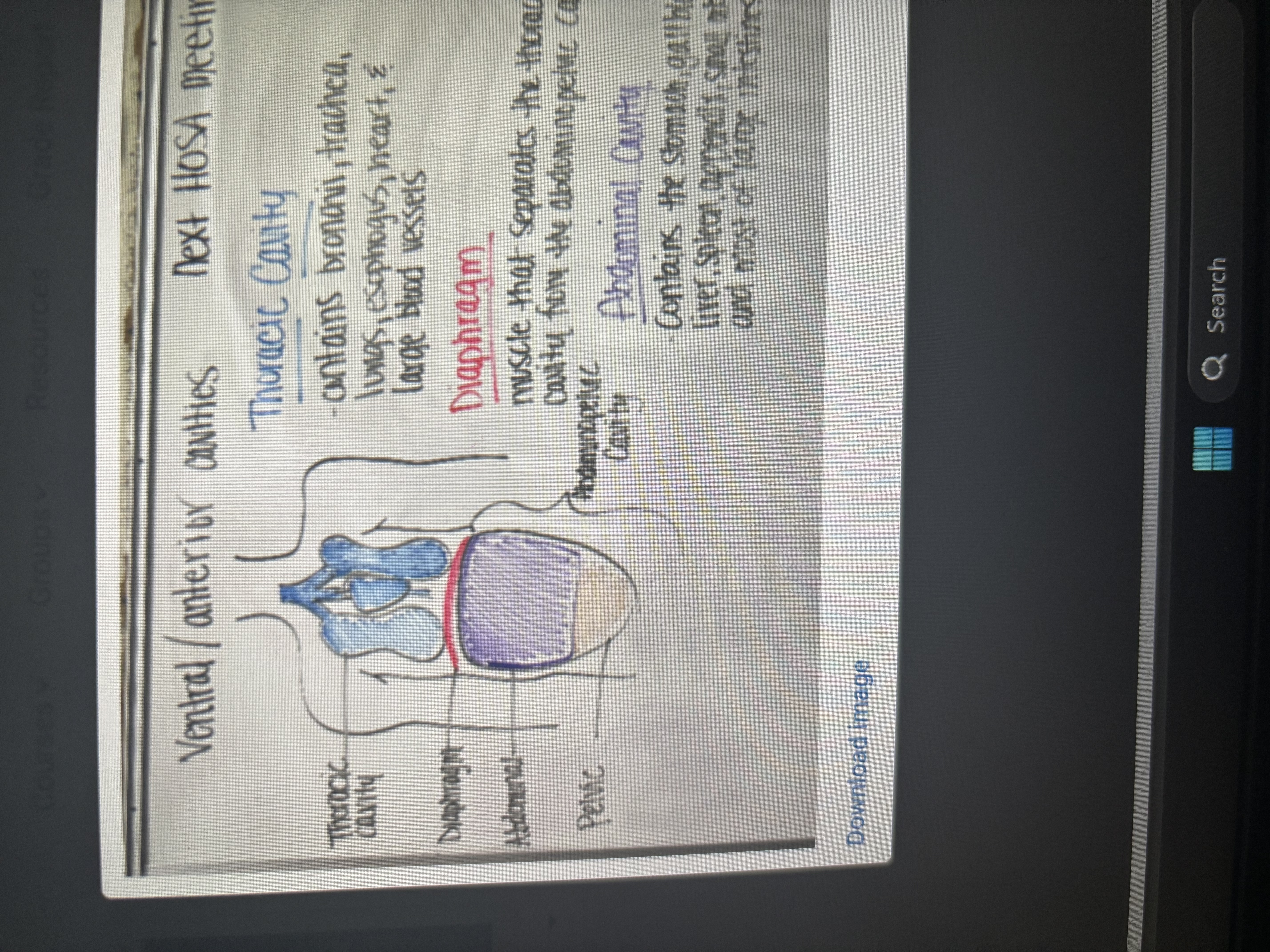
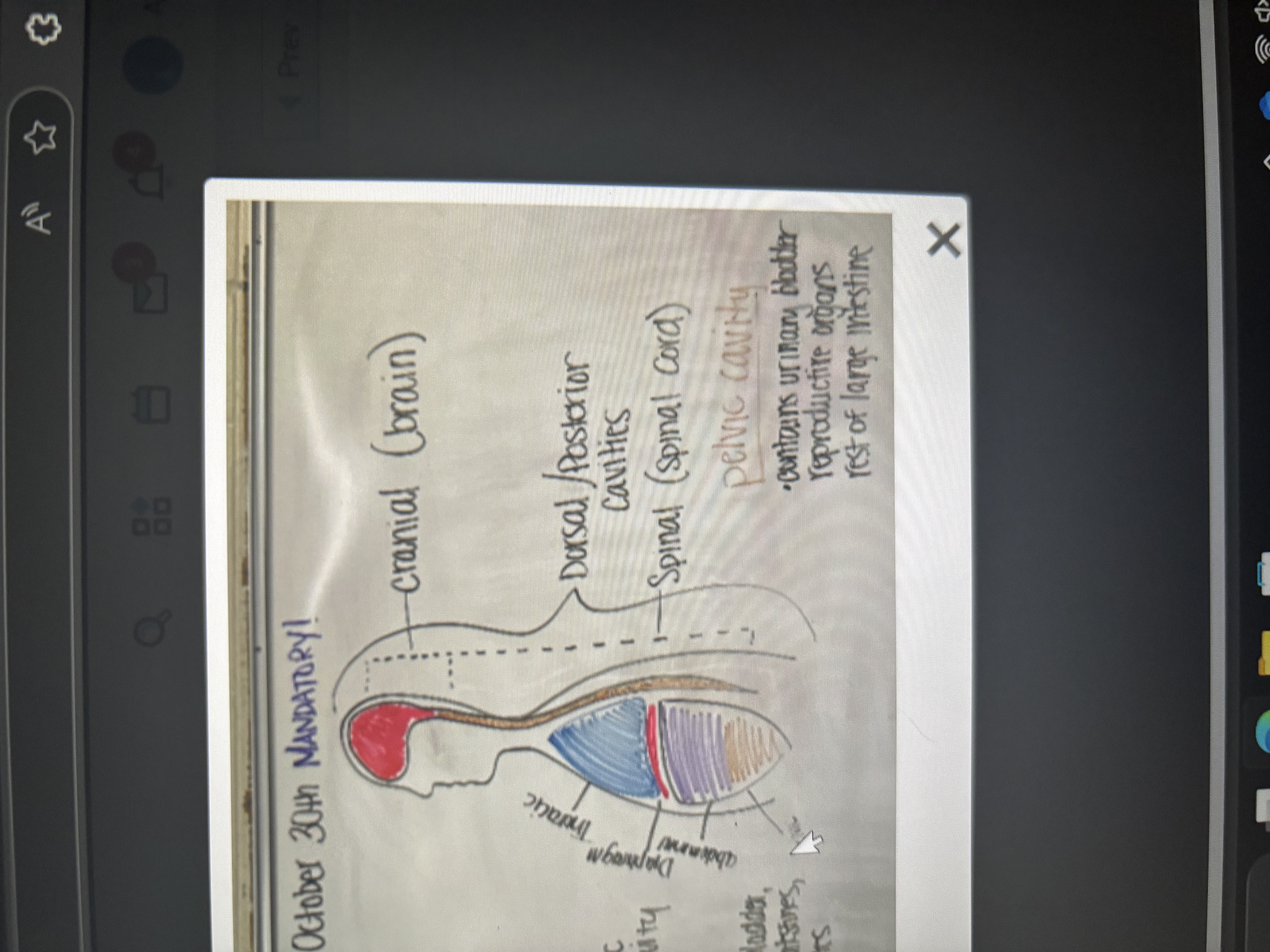
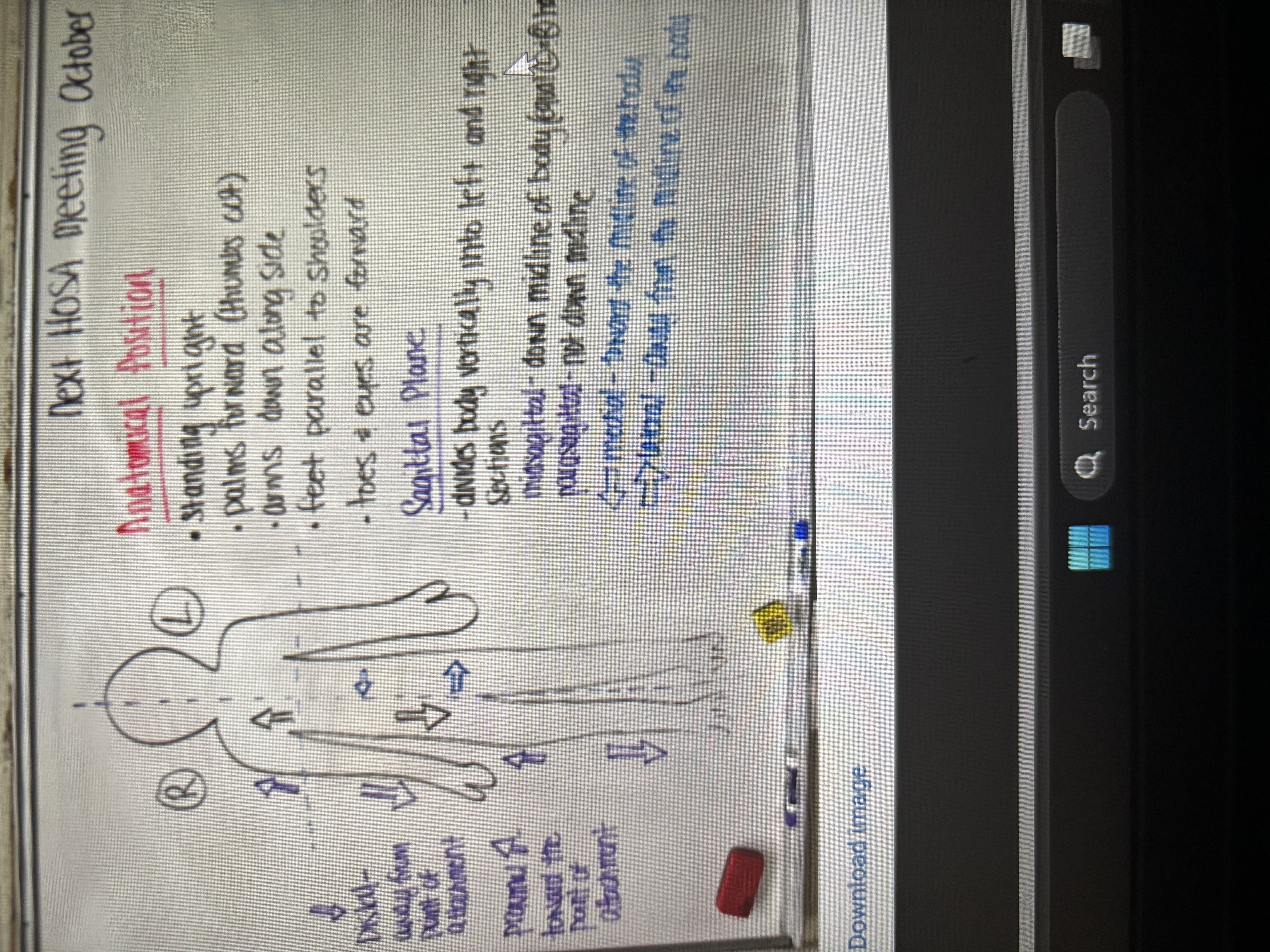
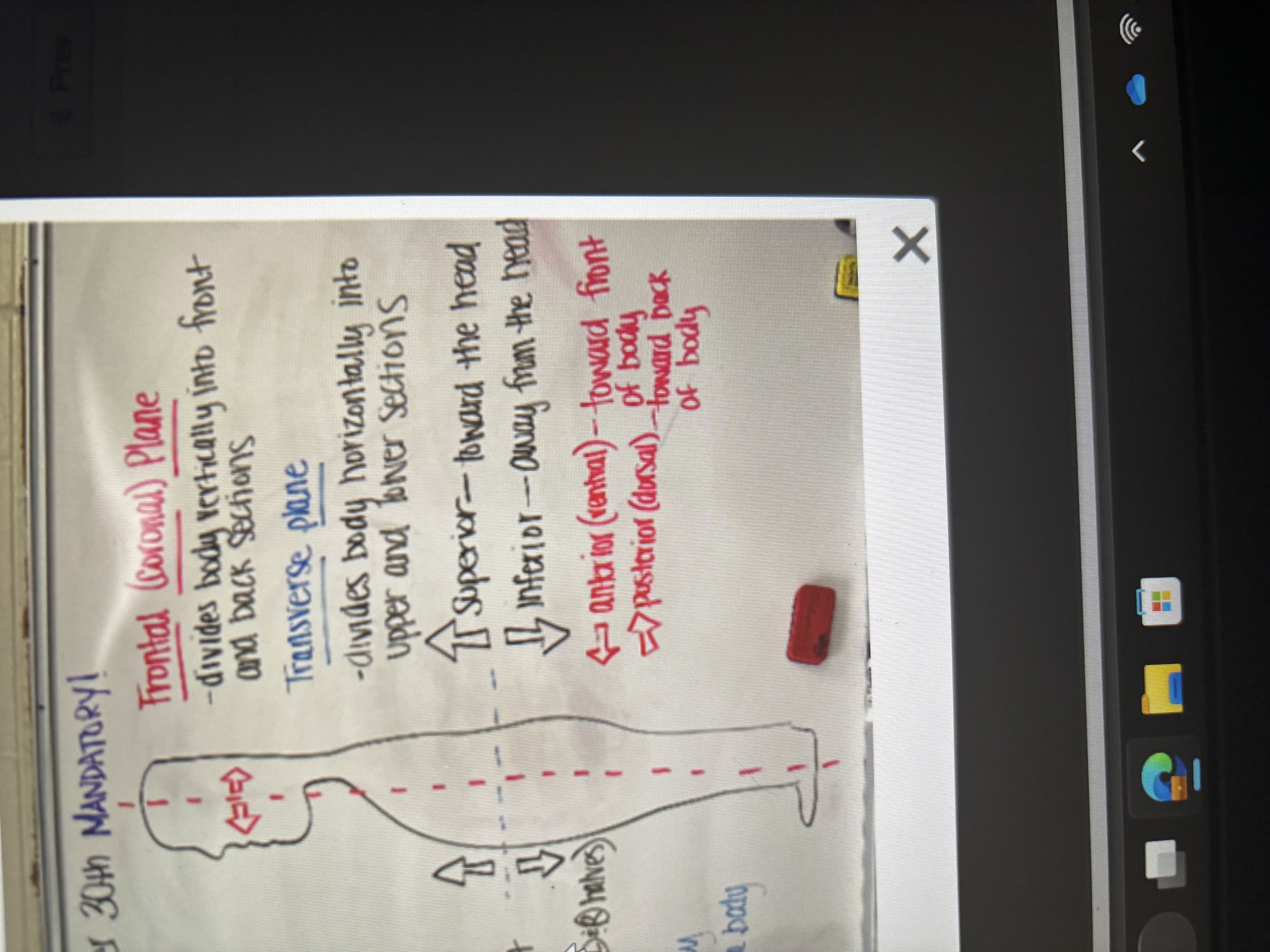
Long bone
longer and wife
Short bone
cube like shape
flat bone
thin and broad and often curved
irregular bone
or not uniformed and shit
sesamoid bone
small bone developed and embedded inside tendons
Joints
Which bones or bone and cartilage come together
fibrous joints
bones are joined by fibrous connective tissue
cartilaginous joints
joined by hyaline cartilage or fibrocartilage
Synovial joints
bones come into contact with a joint cavity filled with lubricating synovial fluid
Synovial Joints
Ball and socket joint, pivot joint, hinge join, saddle joint, plane joint, condyloid
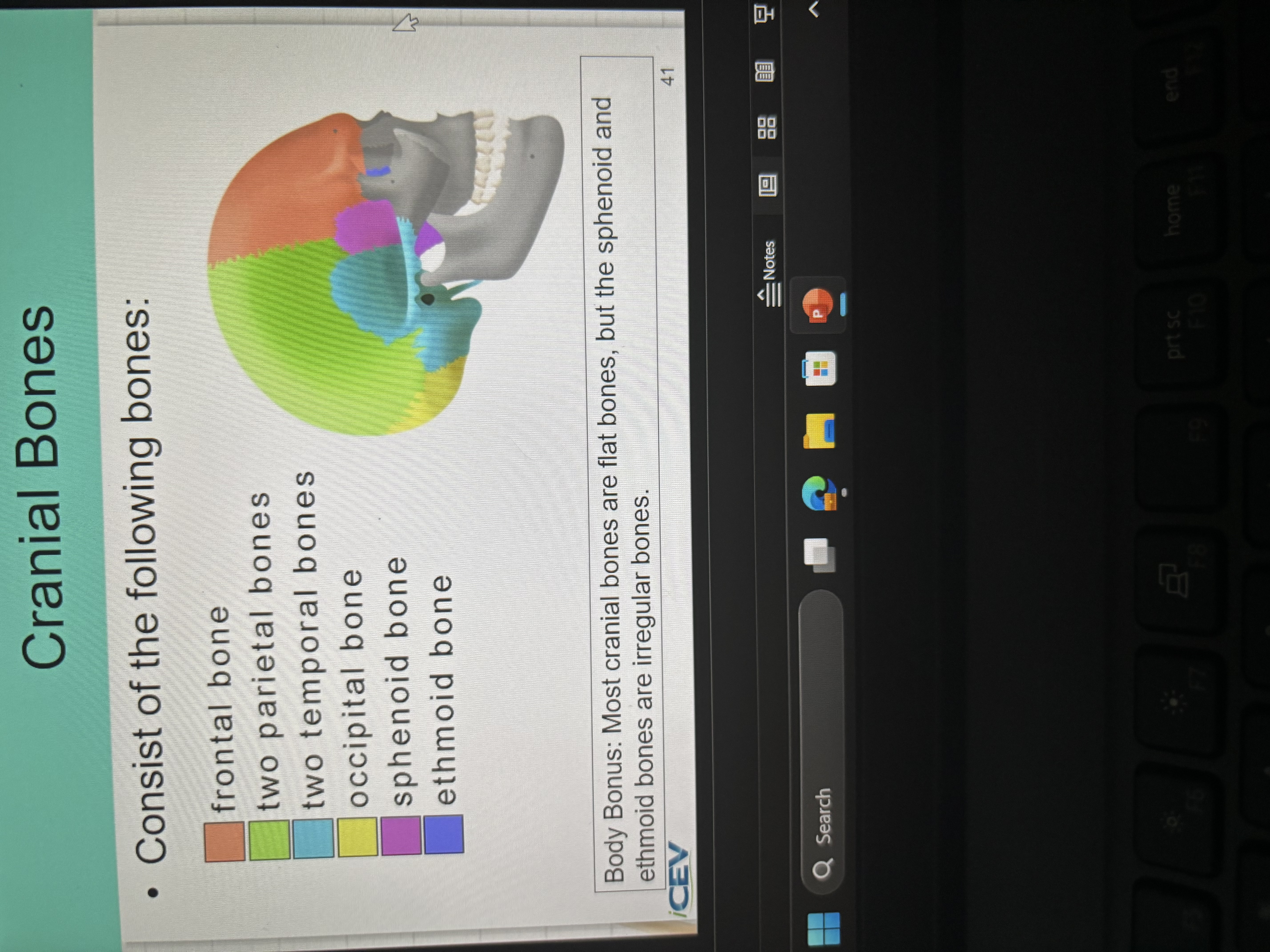
Cranial Bones

cranial bones

facial bones

vertebral column
C1-C7, T1-T12, L1-L5 , sacrum, and coccyx
Ribs
flat curved bones making up wall of the thorax : includes true ribs, false ribs, floating ribs
sternum
known as breast bone is a narrow flat bone at the bodies midline
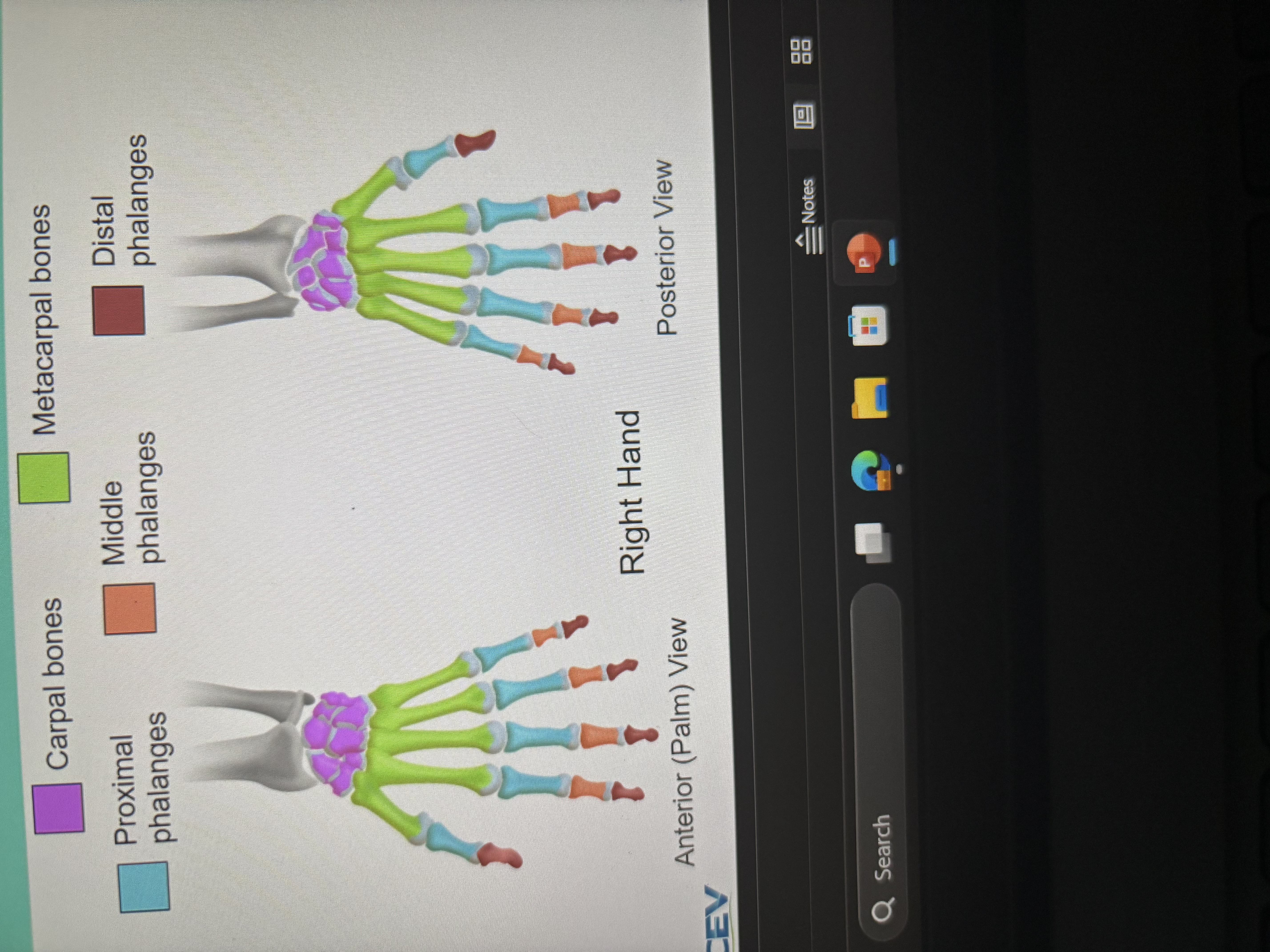
bones of the hand

pelvic girdle
Femur
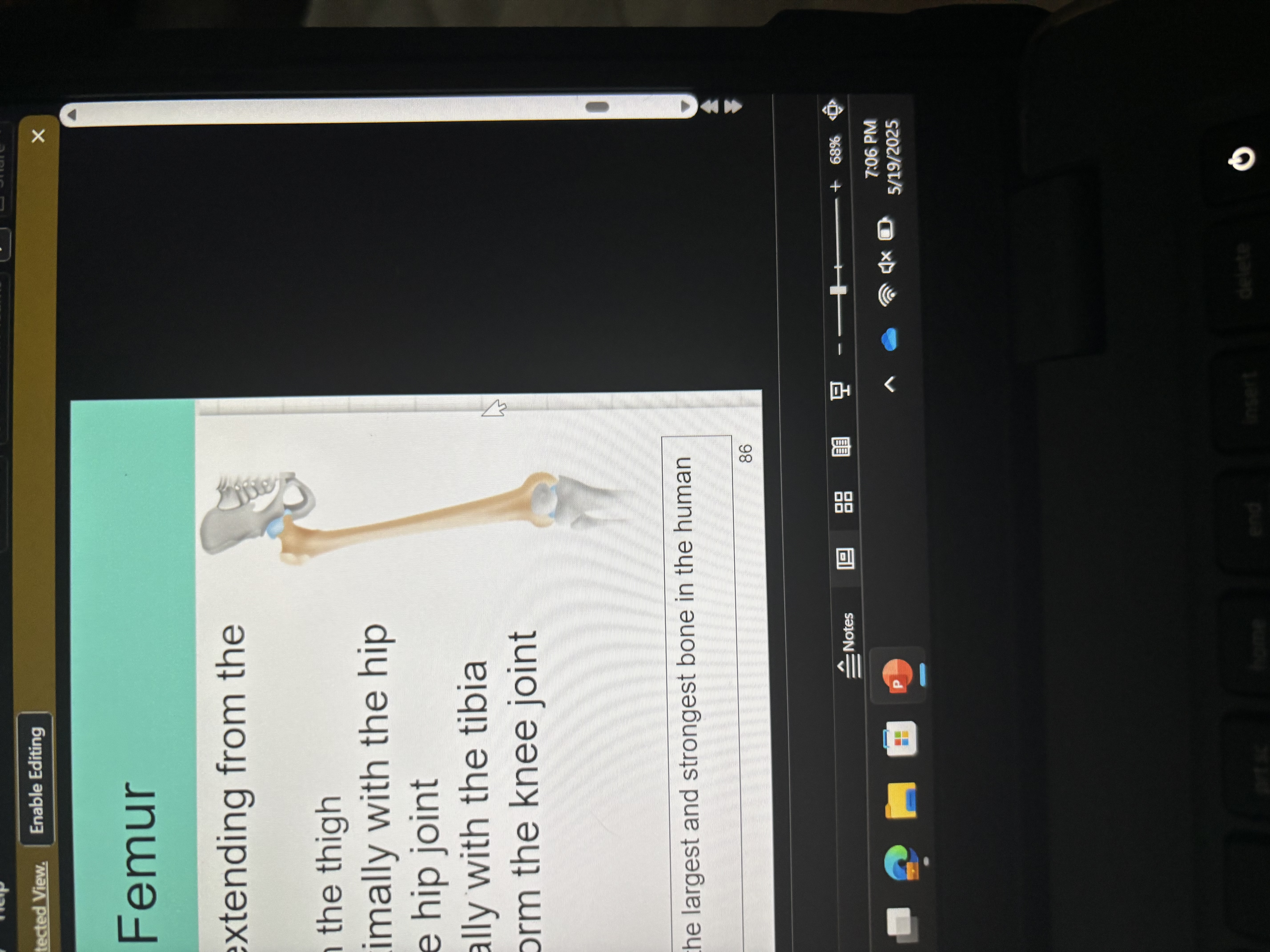
Patella
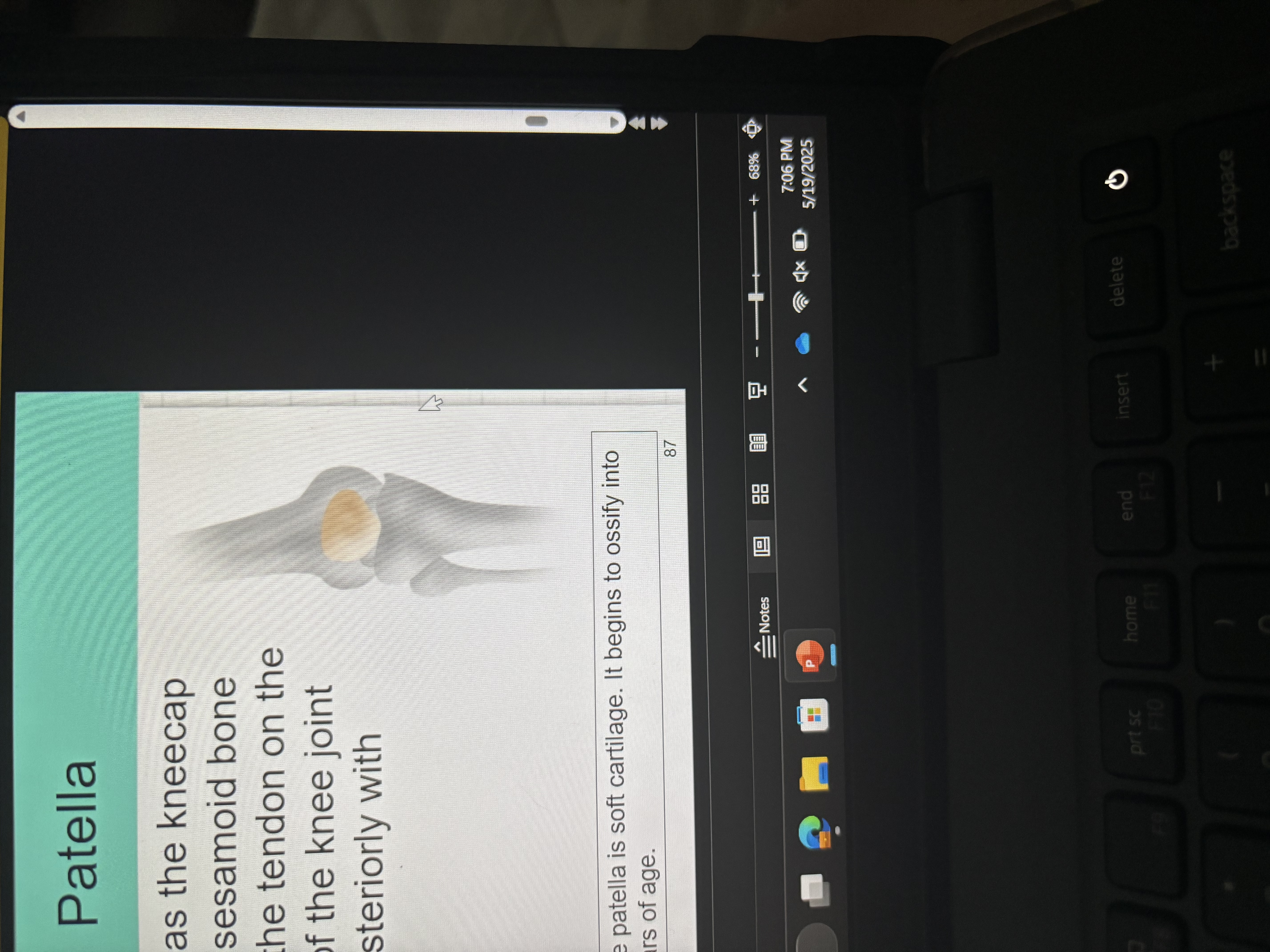
Tibia
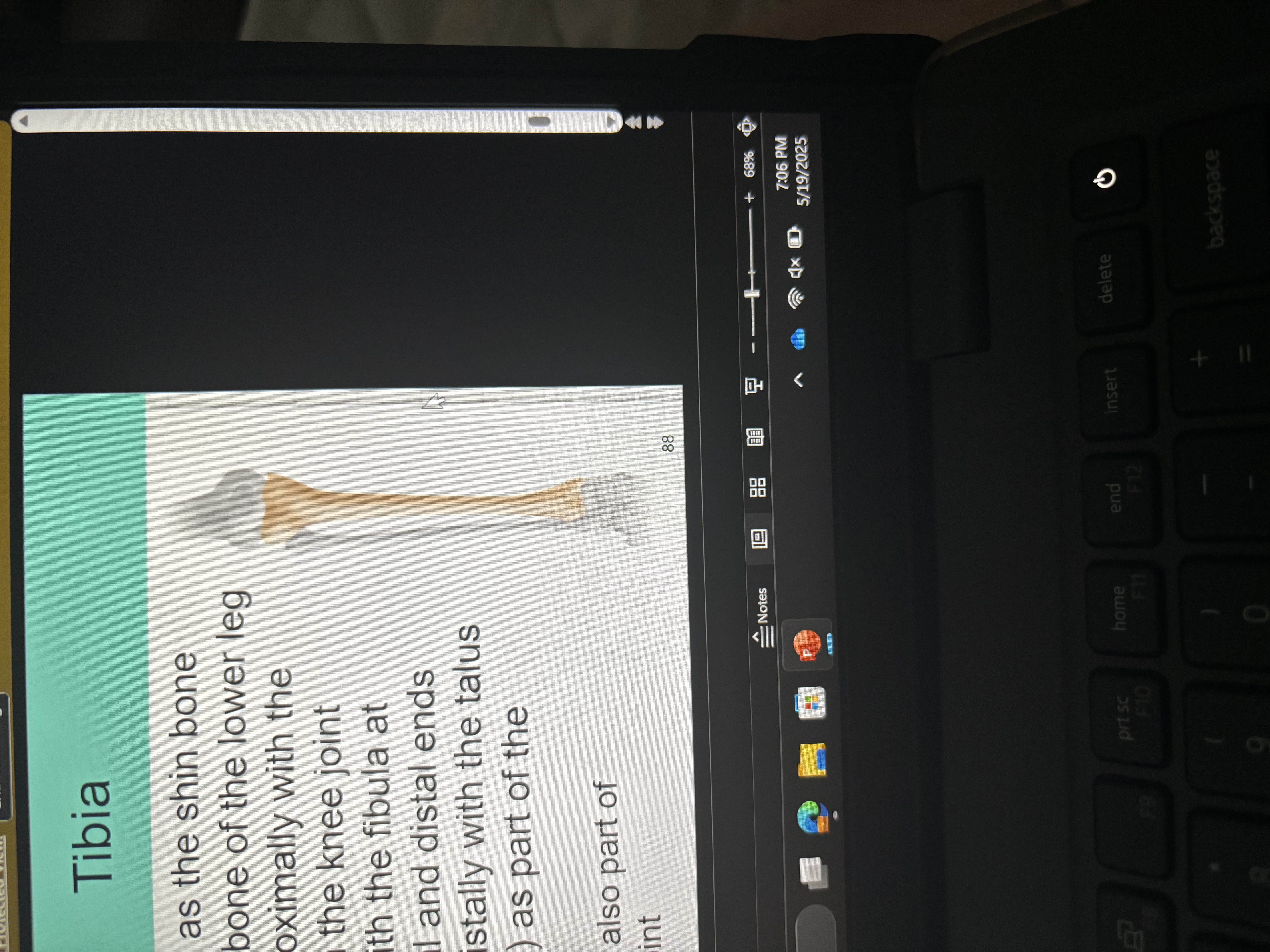
Fibula
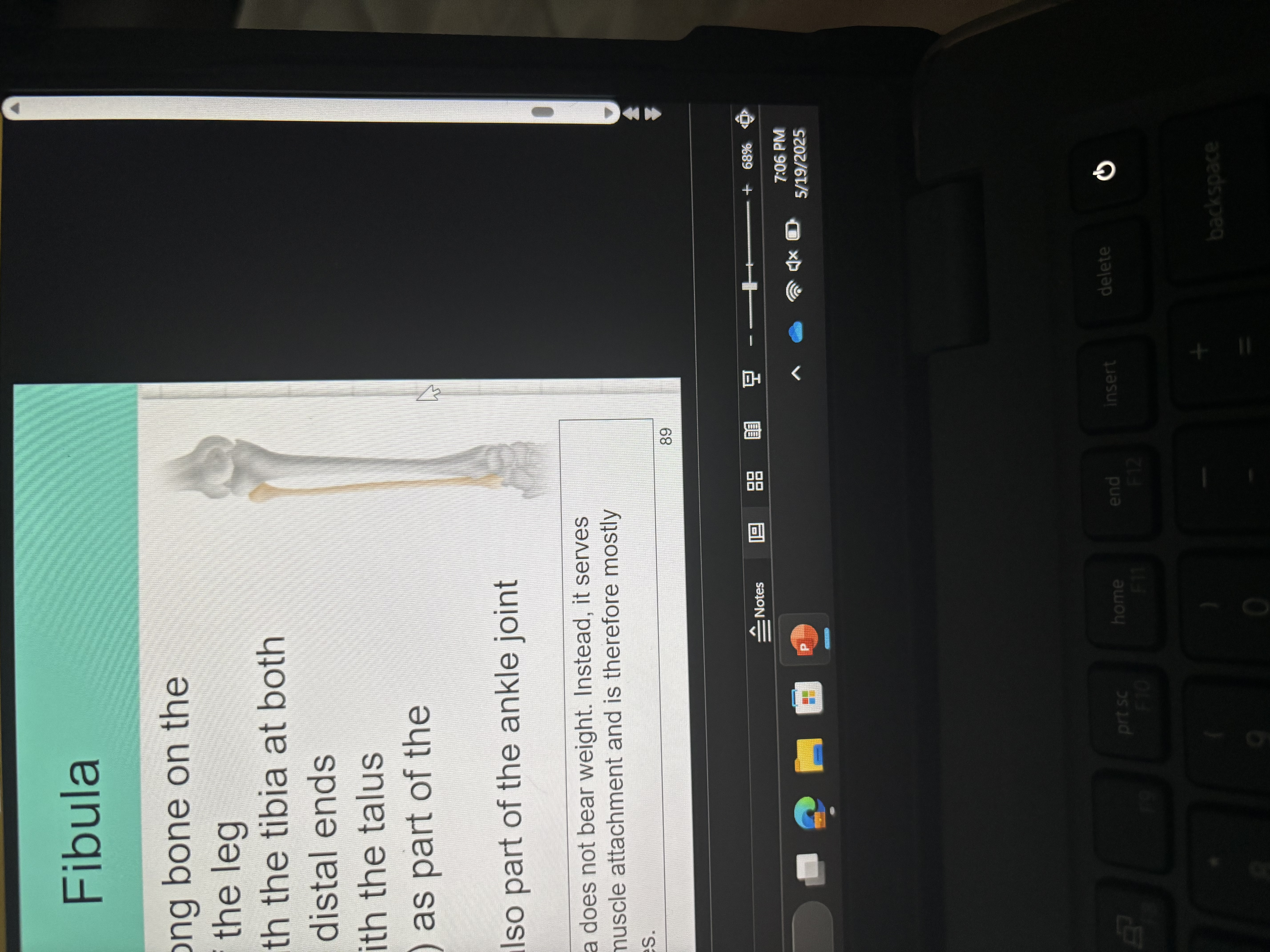
Bones of the foot
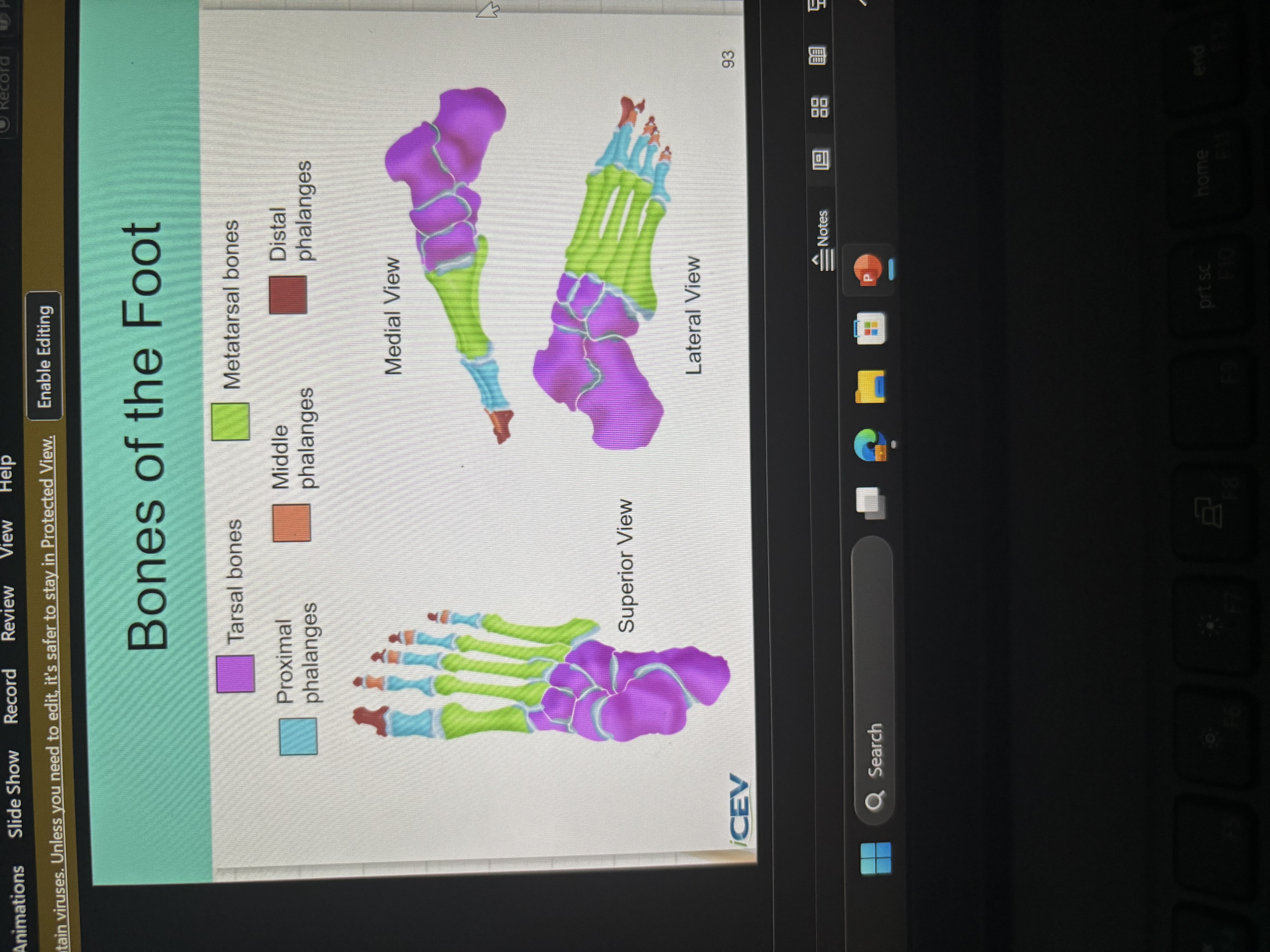
Osteoporosis
loss of bone density and bone commonly associated with age common in women over the sea
osteoarthritis
wear and tear information flowing and redness of the joints, lack of synovial fluid, infection
rheumatoid Arthritis
chronic autoimmune disorder which joint in some organs of the body systems are attacked
spina bifida
A birth defect that occurs when spine and spinal cord don’t form properly
Kyphosis
increase in outward curvature of thoracic spine (hunchback)
scoliosis
abnormal lateral curvature of spine
Osteogenesis imperfects
genetic bone disorder that presents at birth, also known as brutal bone disease, (bones breaking easy)
skeletal muscle
Connect to bone by tendons helps create movements: voluntary
cardiac muscle
Lines the wall of the heart fibers have striated appearance: involuntary
smooth muscle
Bound in hollow walls of organs, move substance through organs: involuntary
lots Of muscle tone
reduction in strength and mass of muscle
muscle strain
Injuries that are caused by overstretching the muscle or tendon
tendonitis
tendon swells becoming inflamed in routine
spasticity
abnormal increase in muscle tone or stiffness
muscular dystrophy
abnormal gene affected healthy muscle structure, and function by interfering with muscle proteins
myasthenia gravis
A rare neuromuscular disorder where the proper nerve pulse are not sent to muscles
CNS
consist of brain and spinal cord
PNS
nerve and ganglia outside of brain and spinal cord